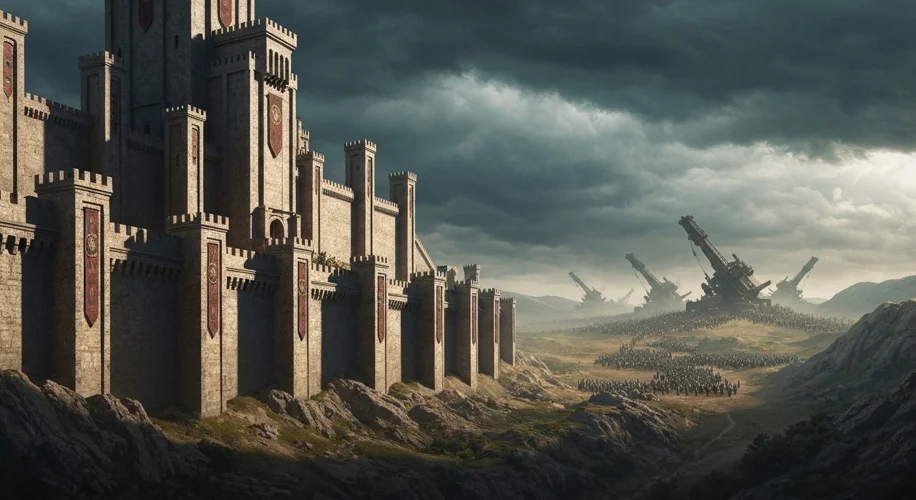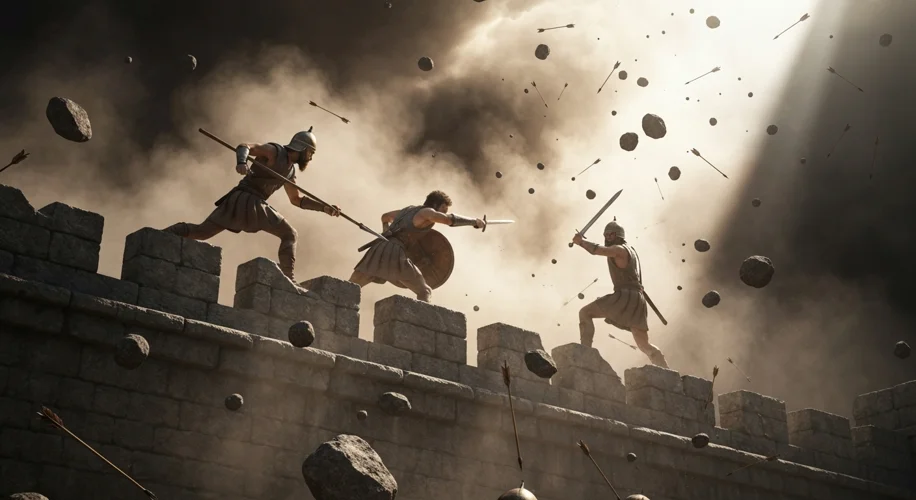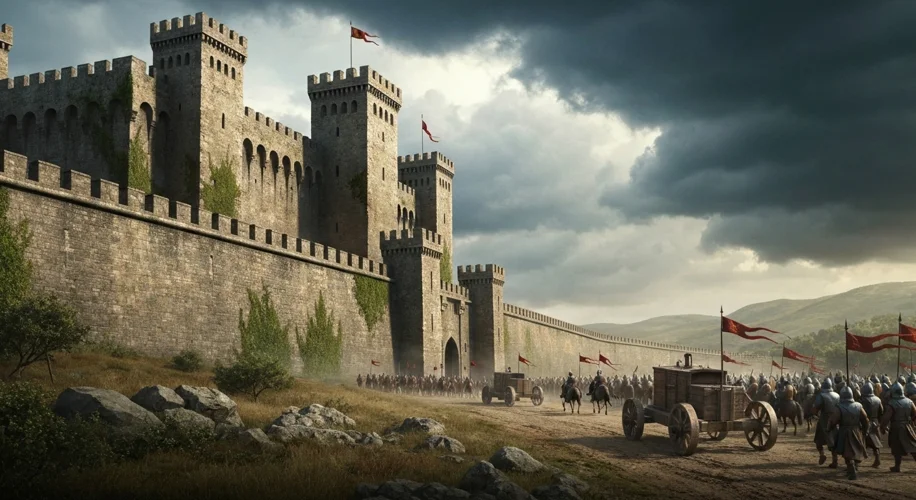The dust of millennia has settled, yet the silent sentinels of ancient times still whisper tales of conflict, resilience, and the unyielding power of stone. These weren’t mere buildings; they were the very sinews of defense, the heartbeats of empires, and the grim arbiters of fate in ancient warfare: the fortifications.
Imagine the scene: a sprawling city, its people living out their lives under the watchful gaze of towering walls. Then, the horizon darkens. The air grows thick with anticipation, soon to be rent by the guttural roars of an approaching army. This was the reality for countless ancient civilizations, and their response was often carved in rock and earth – the fortress.

A Foundation of Fear and Foresight
Long before the advent of gunpowder, the art of war was intimately tied to the art of siege. From the earliest Mesopotamian ziggurats that served as citadels to the formidable stone ramparts of Mycenaean Greece, defensive structures were not an afterthought but a primary concern. The culture of war was one where the ability to withstand an enemy’s assault was as crucial as the ability to deliver one.
Consider the sheer audacity of the Hittites and their meticulously planned fortifications at Hattusa, with their double-layered walls and imposing gates designed to funnel attackers into kill zones. Or picture the city of Babylon, encircled by a vast, triple-tiered defensive system so formidable that legend claimed it was impenetrable. These were not just walls; they were physical manifestations of a civilization’s will to survive.
The historical context for their construction was one of constant flux. Empires rose and fell, borders shifted, and the threat of invasion was a perpetual shadow. Rulers understood that investing in fortifications was investing in the longevity of their power and the safety of their people. These structures provided not only physical protection but also psychological comfort, a tangible symbol of security in an insecure world.
The Architects of Awe: Key Players and Their Designs
The key actors in this drama were not just the soldiers on the ramparts or the besieging armies below, but also the engineers, architects, and laborers who breathed life into stone. From the Hellenistic engineers like Archimedes, who devised ingenious defensive contraptions, to the Roman military architects who standardized legionary fort design, these individuals were the unsung heroes of ancient defense.
Their perspectives were shaped by the realities of their time. A general might see a fortress as a staging ground for counter-offensives, a place to weather a storm and emerge stronger. A city dweller might view it as their only hope of survival, a sanctuary against a brutal enemy. The besieging commander, conversely, saw it as the ultimate obstacle, a puzzle to be solved through a combination of brute force and cunning.
The Dance of Siege and Defense
The heart of the matter lay in the dynamic interplay between attacker and defender. Siege warfare was an ancient and brutal dance. The classic siege involved surrounding a fortified place, cutting off supplies, and battering the walls with siege engines like the ram, the catapult, and the siege tower.
The ram, a massive timber beam with an iron head, would relentlessly pound gates and walls, seeking to create a breach. The catapults and ballistae, with their terrifying projectiles, rained destruction upon defenders and their structures. And the siege tower, a towering mobile platform, aimed to bring attackers level with the battlements, allowing them to engage defenders in direct combat.
However, defenders were far from passive. They employed counter-strategies with equal ferocity. Boiling oil, hot sand, and even rocks were hurled down upon attackers. They dug counter-mines to intercept enemy tunnels, and launched sallies – daring raids from the fortress – to disrupt the siege works. The defense of Masada by the Jewish Sicarii against the Roman legions is a testament to the desperate ingenuity and unwavering resolve that could be found within besieged walls.

Echoes of Victory and Defeat
The impact of fortifications on the outcome of battles and the longevity of empires cannot be overstated. The fall of a well-defended city often meant the subjugation of its people and the absorption of its resources into the victor’s empire. Conversely, the successful defense of a crucial stronghold could cripple an invading army, forcing a retreat and preserving a kingdom.
The longevity of empires was often directly proportional to their ability to maintain and leverage their defensive networks. The Roman Empire, for instance, was as much built on its network of forts and walls, like Hadrian’s Wall in Britain, as it was on its legions. These structures not only defined borders but also facilitated troop movement, communication, and the projection of imperial power.
Lessons in Stone: Analysis and Interpretation
Fortifications were more than just military assets; they were cultural artifacts. They reflected the technological capabilities, the social structures, and the very worldview of the societies that built them. The scale and complexity of a fortress spoke of the resources and labor available, while its design revealed a deep understanding of military strategy and environmental adaptation.
In essence, ancient fortifications represent a profound human endeavor: the creation of an artificial, unyielding landscape to defy the forces of nature and the aggression of man. They stand as enduring monuments to human ingenuity, a testament to the primal instinct for survival, and a stark reminder that even the mightiest empires ultimately relied on the strength and foresight of their walls.
The stones may be weathered, but the lessons they impart about strategy, resilience, and the enduring human struggle for security continue to echo through the ages, reminding us that sometimes, the strongest defense is the one built to last.

